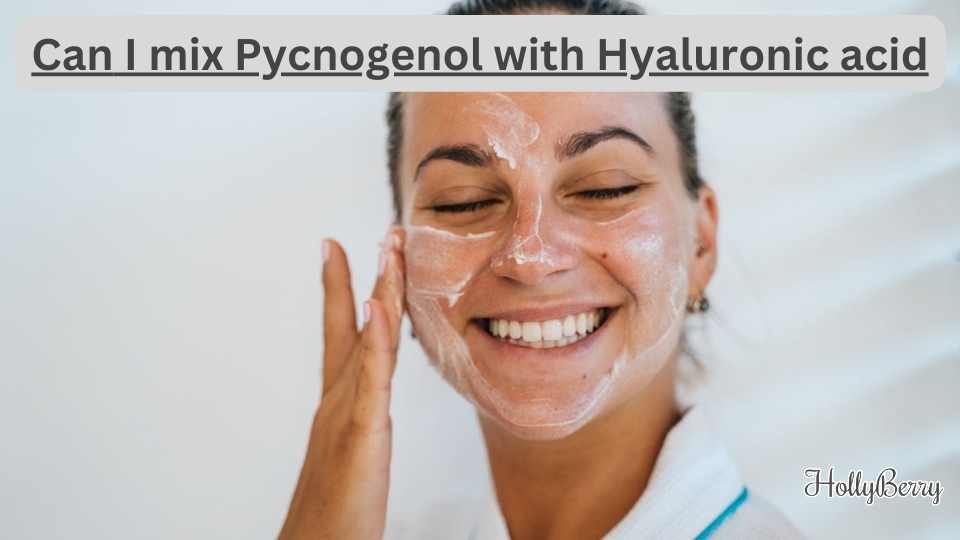
Can I Mix Pycnogenol with Hyaluronic Acid
Share
Expert Insight on Skincare Combos

Combining skincare ingredients effectively can elevate a skincare routine, providing enhanced benefits and targeted results. Pycnogenol, a potent antioxidant derived from French maritime pine bark extract, offers a wealth of skin benefits, including reducing hyperpigmentation and increasing skin elasticity.
Its compatibility with various skincare ingredients is often questioned, especially when it comes to hyaluronic acid, a molecule revered for its hydration properties.
Hyaluronic acid serves as a hydration powerhouse, renowned for its ability to hold up to a thousand times its weight in water.
It's a staple in many skincare regimes, working to plump the skin and reduce the appearance of fine lines. When considering incorporating Pycnogenol into a skincare regimen, it's critical to understand how it interacts with hyaluronic acid.
Skincare enthusiasts may find relief in knowing that Pycnogenol and hyaluronic acid can be mixed within a routine to potentially optimise skin health.
This combination could support skin hydration and provide antioxidant protection, making it a compelling duo for maintaining the skin's youthful appearance.
However, understanding the correct application and possible interactions is key when integrating these components into a daily skincare routine.
Understanding Pycnogenol and Hyaluronic Acid
In the realm of skincare, Pycnogenol and hyaluronic acid are hailed for their unique properties that contribute to skin health.
This section delves into the specifics of Pycnogenol and how hyaluronic acid is pivotal in skincare, along with how their combination may yield synergistic effects for the skin.
Properties of Pycnogenol
Pycnogenol, an extract derived from the bark of French maritime pine trees, is rich in procyanidins and bioflavonoids, key antioxidants that help defend the skin against environmental stressors.
Benefits of Hyaluronic Acid in Skincare
Hyaluronic acid (HA), naturally present in the skin, is a powerful humectant that can hold up to 1000 times its weight in water, providing significant hydration.
It works by drawing moisture into the skin and is included in many products for its ability to reduce the appearance of fine lines and maintain natural moisturizing factors.
Beneficial for all skin types, including sensitive skin, HA is essential in maintaining supple and youthful skin.
Synergistic Effects on Skin
When Pycnogenol is combined with hyaluronic acid, they work together to offer amplified benefits.
The antioxidant action of Pycnogenol safeguards the skin from oxidative damage while promoting skin elasticity, and HA's hydrating properties ensure the skin remains well-moisturised, thus potentially enhancing the overall anti-aging effects.
This combination can be particularly effective for those looking to alleviate dry skin and improve skin texture.
Incorporating into Skincare Regimen

Incorporating Pycnogenol and Hyaluronic Acid into a skincare routine requires understanding their compatibility, adjusting for personal skin needs, and being aware of potential ingredient conflicts.
Safe Use in Skincare
Pycnogenol and Hyaluronic Acid are recognised as safe for use in skincare. They can be layered in a routine to enhance skin hydration and provide antioxidant benefits.
When applying these, it’s usually recommended to start with Hyaluronic Acid, which can be found in many hydrating serums or moisturisers, followed by Pycnogenol to capitalise on its skin-soothing properties.
- Patch-Testing: Always patch-test new products to ensure they do not irritate sensitive skin.
- Routine: For all skin types, apply Hyaluronic Acid on damp skin for better absorption, then finish with a Pycnogenol supplement.
Optimising for Individual Needs
Each individual's skin is unique, requiring tailored solutions. For those with oily skin, incorporating Pycnogenol can help manage blemishes without heavy moisturisers.
People concerned with signs of ageing or pigmentation may find these ingredients beneficial as part of their nighttime routine.
- Layering: Apply lighter products such as serums with Hyaluronic Acid first, followed by thicker formulas or oils containing Pycnogenol.
- Regimens: Incorporate these products into regimens focusing on skin hydration and repair.
Potential Ingredient Conflicts
While Pycnogenol and Hyaluronic Acid are generally compatible with many ingredients, caution should be exercised with certain products. Vitamin C, Retinol, and Direct Acids may have conflicting pH levels or exfoliating properties that could irritate the skin when used alongside Pycnogenol.
Additionally, Copper Peptides should not be used in the same routine due to their potential to interact negatively with antioxidant properties of Pycnogenol.
- Conflicts: Avoid using Pycnogenol with Salicylic Acid or Niacinamide without consulting a skincare professional.
- Skincare Products: Choose products carefully, ensuring that they do not contain ingredients that might conflict with Pycnogenol or Hyaluronic Acid.
